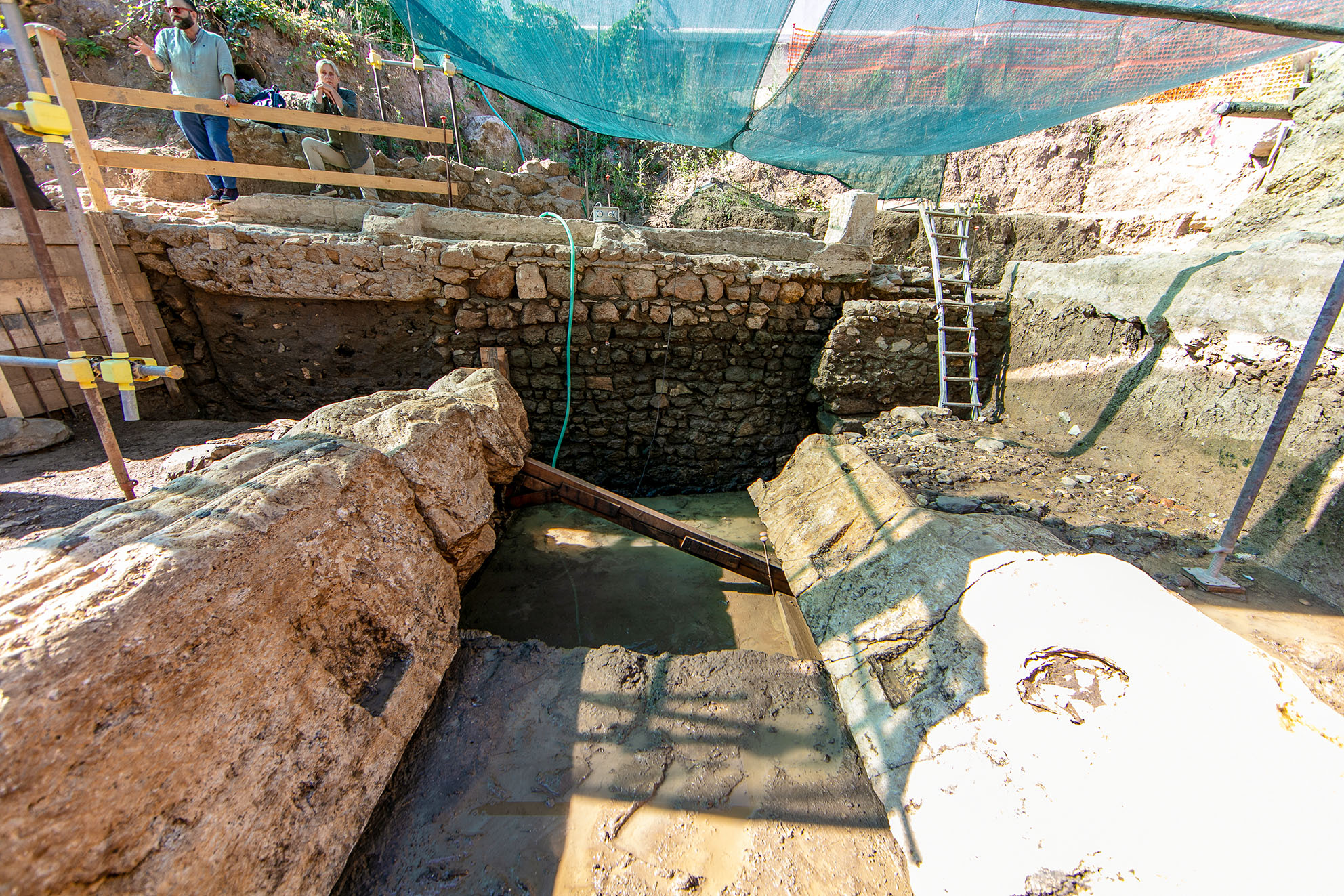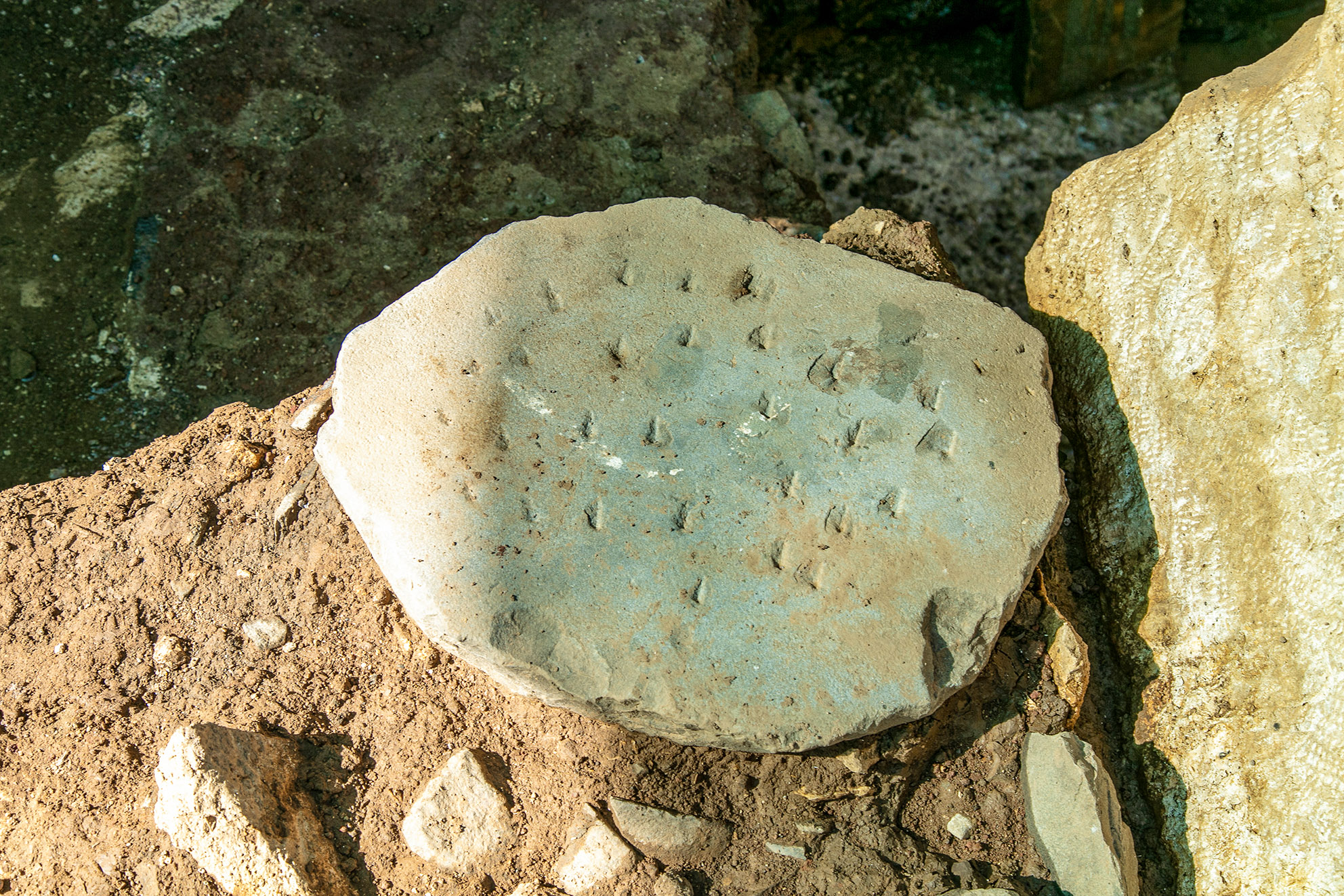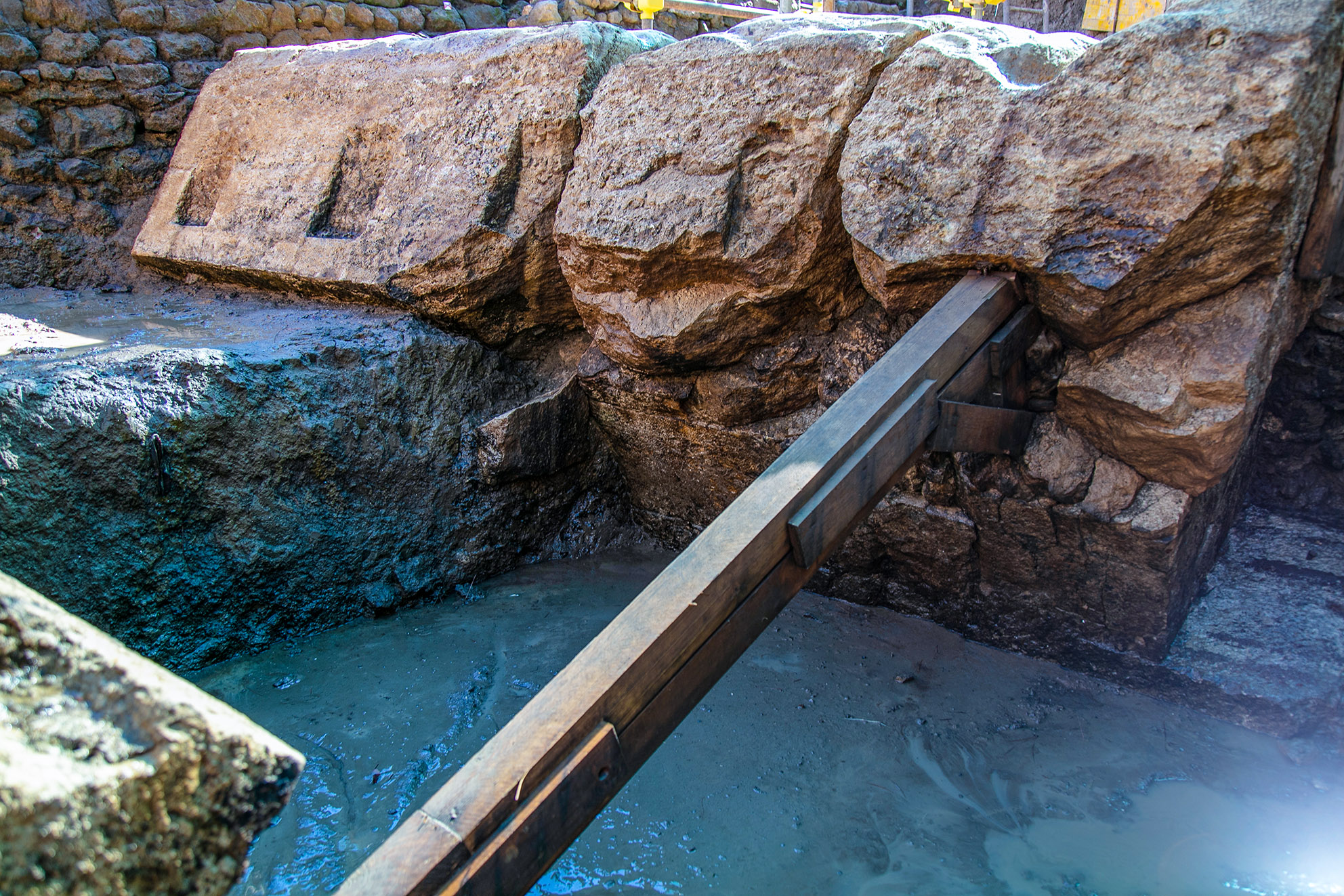The bridge of the imperial age found along the Via Tiburtina, in Rome, Detail of the groove | Photo: © Fabio Caricchia | Courtesy Special Superintendence of Rome
A Roman bridge re-emerged during the archaeological investigations conducted under the direction of the Special Superintendence of Rome for the enlargement works of the Tiburtina conducted by the Municipality at the eleventh kilometer of the modern road and at the seventh mile of the ancient road.
The structure, at a first analysis of the imperial era, would have allowed the ancient Tiburtina to cross the Fosso di Pratolungo, just before the point where the stream flows into the Aniene.
“Rome always surprises us with the testimonies of its millenary history – declares Daniela Porro, special superintendent of Rome -. The newly found bridge shows the remains of a valuable work of Roman engineering and will allow a better understanding of the ancient topography of the area and its developments over the centuries. However, the excavation and conservation of the bridge will not be an obstacle to the ongoing enlargement of Via Tiburtina ”.

The bridge of the imperial age found along the Via Tiburtina, in Rome | Photo: © Fabio Caricchia | Courtesy Special Superintendence of Rome
The excavations, directed by Fabrizio Santi, archaeologist of the Special Superintendence of Rome, by the archaeologists Stefania Bavastro and Mara Carcieri of the Land Srl, have returned the central portion of the round arch of the bridge, built with mighty blocks of travertine installed in dry, fixed to each other through rectangular grooves connected to protrusions identical in characteristics and dimensions, reinforced on the outside by a thick layer of cement. The arch has no central part. The absence of the keystone is due to the fact that the area was rearranged in the Middle Ages and the Renaissance, when the bridge was partially demolished and closed by two walls over three meters high.

The bridge of the imperial age found along the Via Tiburtina, in Rome, Detail of the paving | Photo: © Fabio Caricchia | Courtesy Special Superintendence of Rome
These structures, coated only on the outside with plaster, seem to have supported a functional ramp to cross the ditch. It is currently being assessed whether there are any connections between this discovery and another portion of the bridge found last winter just 25 meters away, on the opposite side of the Fosso di Pratolungo and of an earlier period, most likely dating back to the III-II century. B.C
The excavation campaign has revealed several alluvial layers that prove how the bridge crossed the ditch in a particularly critical point, subject since Roman times to frequent flooding and swamping.
At the end of the archaeological investigations, the remains of the structure, which run four meters below the current road level within an aquifer, will be consolidated and covered in order to guarantee their protection and perfect conservation.

The bridge of the imperial age found along the Via Tiburtina, in Rome, arch | Photo: © Fabio Caricchia | Courtesy Special Superintendence of Rome

